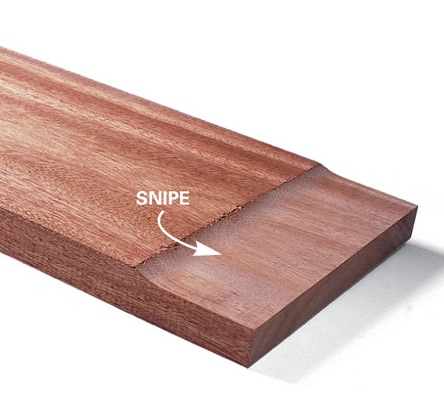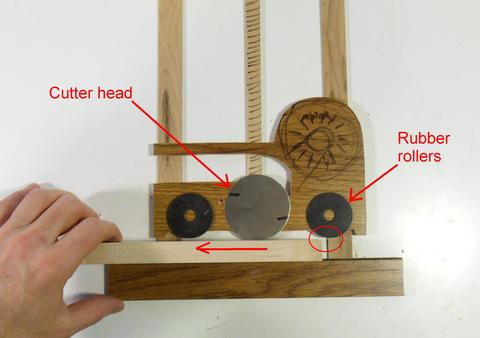Do all planers have snipe? If you’re new to woodworking, you might be wondering what snipe is and if it’s a common issue with planers. Well, you’re in the right place! In this article, we’ll dive into the world of planers and explore whether snipe is a universal problem or if there are ways to minimize it. So, grab your safety goggles and let’s get started!
Now, before we tackle the snipe situation, let’s take a step back and understand what a planer actually is. A planer is a handy tool used in woodworking to smooth and shape wooden surfaces with precision. It’s like giving your woodworking project a flawless makeover! But here’s the catch: sometimes, when you run a board through a planer, you might notice a slight dip or bump at the beginning or end of the board. That’s snipe!
So, back to the burning question: do all planers have snipe? The answer is not a simple yes or no. While snipe can be a common occurrence in many planers, not all planers suffer from this issue. It depends on various factors like the quality and design of the planer, as well as how you operate it. Luckily, there are techniques and adjustments you can make to reduce or even eliminate snipe altogether. Exciting, isn’t it?
Now that you know the basics of planers and snipe, it’s time to delve deeper into this intriguing subject. We’ll discuss the causes of snipe, share tips to prevent it, and uncover some insider tricks that experienced woodworkers use to tackle snipe head-on. Get ready to become a snipe-busting woodworking pro who can achieve flawlessly smooth surfaces every time! Let’s embark on this exciting journey together!
Wondering if all planers have snipe? Snipe, the unwanted uneven cuts at the beginning and end of a board, is a common issue in planers. While most planers do have some level of snipe, not all planers are equal in this regard. Many modern planers are designed with features to minimize snipe, such as longer infeed and outfeed tables or built-in snipe locks. When choosing a planer, look for these features to minimize snipe and ensure smoother cuts.

Do All Planers Have Snipe?
Planers are essential tools in woodworking, used to smooth and shape wood surfaces. However, one common issue that woodworkers often encounter is snipe. Snipe refers to a deeper cut or dip at the beginning or end of a board when it passes through a planer. Many woodworkers wonder if all planers have snipe or if there are ways to minimize or eliminate it. In this article, we will explore the causes of snipe, whether all planers have it, and tips to reduce or prevent snipe from occurring.
Understanding Snipe
When a board is fed through a planer, snipe can occur due to several factors. Firstly, the blades of the planer exert pressure on the board at both ends, causing a slight lifting or dropping motion. This motion can result in uneven cuts at the beginning or end of the board, creating snipe. Additionally, the rollers or feed tables on the planer can also contribute to snipe if they are not properly aligned or adjusted.
To better understand snipe, it’s important to note that not all planers produce the same level of snipe. Some planers are designed with anti-snipe mechanisms or features that minimize the occurrence of snipe. However, even planers equipped with anti-snipe features may still produce some degree of snipe, albeit less pronounced than those without these mechanisms.
Minimizing Snipe in Planers
While it may be challenging to completely eliminate snipe, there are several techniques and adjustments that woodworkers can employ to minimize its occurrence:
1. Use Infeed and Outfeed Support: By supporting the board both before and after it enters the planer, you can reduce the chances of snipe. This can be done by using additional tables, roller stands, or even a friend to help support the board during the planing process.
2. Adjust the Planer Bed Height: Ensuring that the planer bed is level and aligned with the rollers and blades is crucial for minimizing snipe. In some cases, adjusting the height of the planer bed slightly higher or lower than the blades can help reduce snipe.
3. Take Lighter Passes: Decreasing the depth of each pass can help alleviate the pressure exerted on the board, reducing the likelihood of snipe. Taking multiple light passes instead of one heavy pass can also help achieve a smoother finish and minimize snipe.
4. Invest in a Planer with Anti-Snipe Features: If snipe is a significant concern, consider investing in a planer that has built-in anti-snipe features. These features typically include mechanisms that adjust the pressure exerted by the planer on the board ends, helping to minimize or eliminate snipe.
By implementing these techniques and adjustments, woodworkers can significantly reduce the occurrence of snipe and achieve smoother finishes on their boards.
Planers with Anti-Snipe Features
While all planers may produce some level of snipe, certain models are designed with specific features that aim to minimize or eliminate snipe. These features can include:
1. Anti-Snipe Locks: Some planers have adjustable locks or clamps that stabilize the infeed and outfeed tables, reducing the chances of snipe.
2. Pressure-Auto Adjustments: Certain planers automatically adjust the pressure exerted by the blades on the board ends, ensuring a consistent cut and minimizing snipe.
3. Extended Infeed and Outfeed Tables: Planers with longer infeed and outfeed tables provide better support for boards, reducing snipe.
4. Spiral Cutterheads: Planers equipped with spiral cutterheads, also known as helical cutterheads, can help minimize snipe due to their design. The multiple small cutting edges of the spiral cutterhead distribute the cutting force more evenly, reducing the likelihood of snipe.
It’s important to note that while planers with anti-snipe features can significantly reduce snipe, it may still be present to some degree. Proper techniques and adjustments should still be employed to achieve the best results.
Conclusion:
Snipe is a common issue encountered by woodworkers when using planers. While not all planers produce the same level of snipe, it is possible to minimize its occurrence through various techniques and adjustments. Woodworkers can experiment with the methods mentioned in this article, such as using infeed and outfeed support, adjusting the planer bed height, taking lighter passes, or investing in a planer with anti-snipe features. By implementing these strategies, woodworkers can achieve smoother finishes on their boards and reduce the frustrations caused by snipe. Remember to experiment, practice, and find the approach that works best for you and your specific planer model. Happy planing!
Key Takeaways – Do All Planers Have Snipe?
- Not all planers have snipe, but it is a common issue in many models.
- Snipe refers to a small amount of material being removed at the beginning or end of a board.
- To minimize snipe, it is important to properly adjust the infeed and outfeed tables.
- Using auxiliary supports or pressure rollers can also help reduce snipe.
- Some planers have built-in features like anti-snipe locks or snipe reduction systems to mitigate the issue.
Frequently Asked Questions
Welcome to our FAQ section where we’ll answer some common questions about planers and snipe.
1. Why does my planer produce snipe?
Snipe is a common issue with planers and occurs when the machine takes off slightly more material at the beginning or end of a board. This can result in a small indentation or uneven thickness on the wood surface. Several factors can contribute to snipe, such as improper workpiece support, incorrect feed speed, or dull blades. Thankfully, there are ways to minimize snipe by using infeed and outfeed support, adjusting the feed rate, and maintaining sharp blades. By following these practices, you can reduce or even eliminate snipe from your planing process.
2. Can I completely eliminate snipe from all planers?
While it is challenging to completely eliminate snipe from all planers, you can greatly reduce its occurrence. Some planers are designed with features like infeed and outfeed tables that help mitigate snipe by providing additional support to the workpiece. Additionally, adjusting the feed rate and maintaining sharp blades can also minimize snipe. However, it’s important to note that even with these precautions, there is still a small chance of snipe occurring. It’s a good practice to plan for the extra length when cutting your boards, allowing you to trim off any snipe that may occur.
3. Is snipe a sign of a faulty planer?
No, snipe is not necessarily an indication of a faulty planer. Even well-maintained and high-quality planers can produce snipe. It is a common occurrence in planing machines due to the nature of their design and the mechanics involved. Snipe can be managed and minimized by employing various techniques and best practices during the planning process, as mentioned earlier. Regular maintenance and adjustments to your planer can also help reduce snipe and ensure optimal performance.
4. Are there any planers that are known for producing less snipe?
While there are planers that are designed to minimize snipe, it is important to note that no planer can completely eliminate snipe in all scenarios. Some planers have built-in features like head lock systems, segmented infeed and outfeed tables, and anti-snipe mechanisms that aim to reduce snipe. These features can be effective in minimizing snipe, but the results may vary depending on factors such as the type and thickness of the wood being planed, the feed rate, and the overall setup of the planer. It’s always a good idea to research and read reviews about planers’ snipe performance before making a purchase.
5. Can snipe be fixed after the planing process?
If you notice snipe on your boards after the planing process, don’t worry, it can often be fixed. Snipe is usually only surface-level and can be removed by making a light pass with a sander or hand plane. By carefully sanding or planing the affected area, you can level out the surface and remove the snipe marks. However, prevention is always better than fixing, so it’s best to minimize snipe during the planing process itself by following the appropriate techniques and using proper support and adjustments.

Planer Snipe: It happens, get over it…
Summary:
Planers are handy tools for smoothing wood, but not all planers cause snipe, which is when the machine cuts deeper at the beginning or end of a board. Snipe can be minimized by adjusting the planer’s settings and using certain techniques. Portable planers are more likely to have snipe due to their design, and there are a few tips to reduce it, such as starting with longer boards and using scrap wood as sacrificial pieces. However, not all planers, including benchtop and stationary models, are prone to snipe, so it is important to choose the right planer for your needs.
